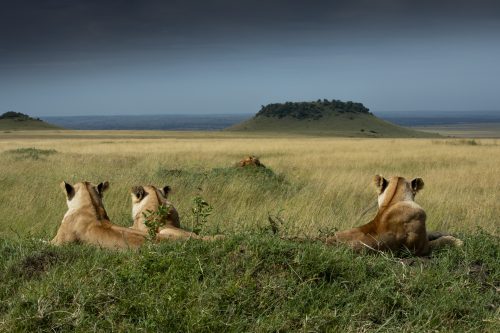
The Mara Triangle is blessed with spectacular scenery. There is little doubt it is one of the finest landscapes in Kenya, and dare I say even East Africa. Within this rough triangle of protected wilderness there is one region in particular that I find a cut above the rest. Just a short distance from the border with the Serengeti lies the Inselbergs. Like a magnet this area just pulls me in. I could spend every single game drive here, exploring the rocky koppies, meandering along the numerous drainage lines, sitting under the rock figs, and scanning the grasslands for cheetahs, lions and leopards. If these hills could speak, what stories they would tell.
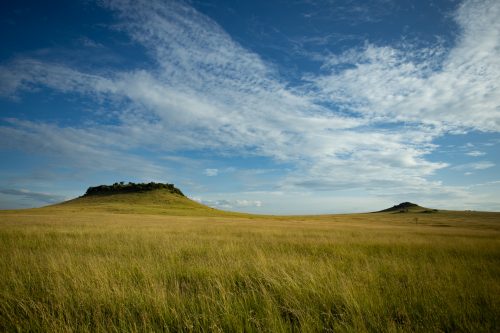
An Inselberg is an isolated rocky hill; it rises abruptly from an otherwise level landscape. Hard capped weather resistant rock erodes at a slower rate than the surrounding rocks. In the Mara these Inselbergs are extremely localised to this relatively small area.
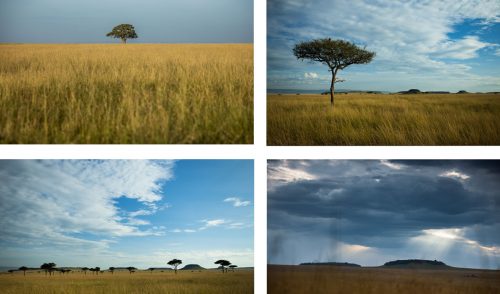
The rocky ‘caps’ create a microclimate of sorts – islands of forest in a sea of grass. It is in these rocky outcrops that lions and leopards like to den: perfect caves and overhangs to stash away cubs, elevated viewpoints to look out for friend and foe. Drive through this area enough times and it is possible to see an entire pride of lions splayed out on the rocks, basking in the morning sun.
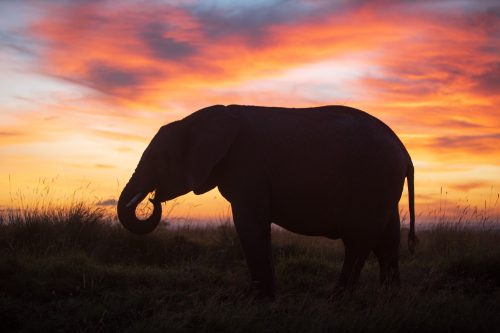
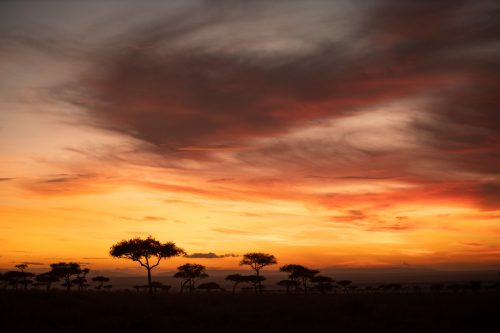
Not only do they make great den sites, but they make breath-taking backdrops to photographs. Wildlife photographers will agree that context is essential in visual storytelling. A truly memorable shot, in my opinion, is one in which the landscape and the overall atmosphere, is as important as the subject within the photo. Hence why when I drive into the ‘Inselberg World’ I always try to get there in the best light, and with a wide angle lens at hand. It is in this area that I find the best canvas on which to create.

Pride dynamics shift continually, largely determined by prey distribution and movements. Over the last few weeks the most exciting pride to watch in the Triangle has been the Egyptian Pride. The pendulum has swung of late, and I now believe the Border Pride is where the action lies. This large pride has fractured to some degree; an attempt to deal with some of the lionesses having new cubs. There are at least 3 temporary divisions within the pride.
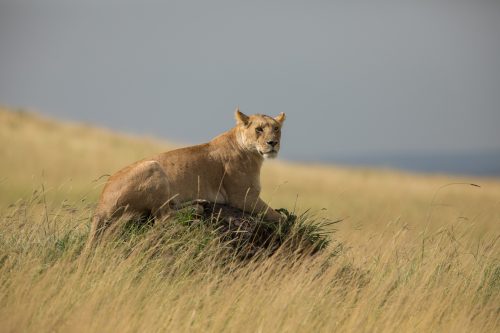

Daily trips down into the Borderlands allows you the potential of piecing together the puzzle. It also allows the potential for some remarkable sightings. None more so than one I had on Tuesday morning. I was watching a herd of over 600 buffalo grazing at the base of the ‘Myles Turner’ Inselberg. They seemed stressed and agitated. They were grouped closely together. A sure sign of a predator lurking nearby. I looped around the herd, when I caught a glimpse of 3 lionesses and a young male. They were in the midst of stalking an old bull who was off to the side. They crept closer…
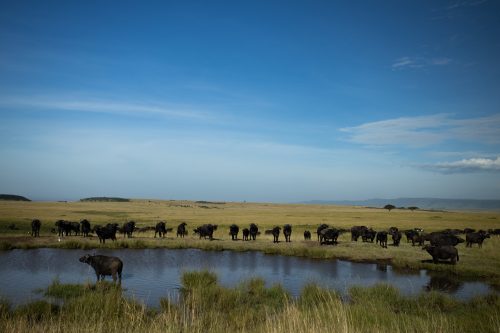
The bull looked up at the crucial moment, seeing the lioness, as she was no more than 10 yards from him. Like thunder he bounded away bellowing. The knock-on effect was staggering. The entire herd of 600 beasts started to stampede. The sound was furious. The earth shook.
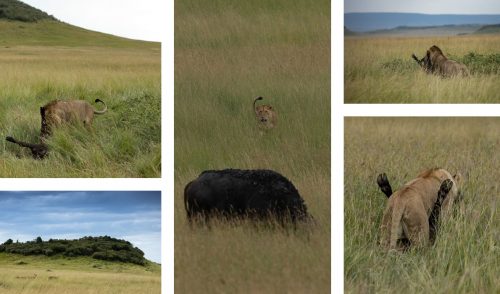
Nature can be cruel. In the melee, two relatively young buffalo calves were trampled by their own family. Run over and compacted into the ground. The one seemed to have had its back broken, the other was stuck in the mud. The lions circled. Instead of killing the 2 helpless babies, they started to pull them around. They bit them and carried them, sat on them and pushed them. It was easy to see what they were doing. Incredibly, they were forcing the babies to call-out in distress. A bellowing call which a mother could simply not ignore. I have seen this once before in the Kalahari when I watched a pride catch a young eland, only to sit on it and force it to call. Its mother returned to the scene and the lions proceeded to catch the mother as well. On this occasion the mothers did indeed return, but wisely decided they had no chance – they sprinted away to re-join the herd, before the lions could catch them too.
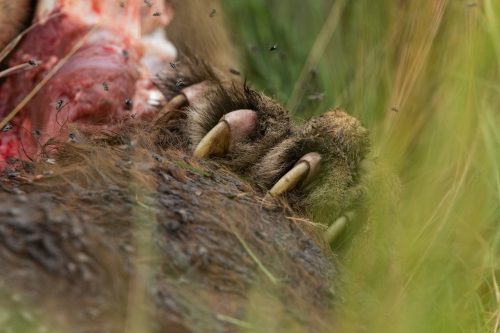

One lioness pulled the one injured calf hundreds of meters, eventually climbing up the entire Inselberg with the calf still just about alive. As she neared the top of the hill, buffalo calf in mouth, I had a split second view of a tiny cub popping its head out from inside a little overhang. The circle of life, the way of the wild, is tough.
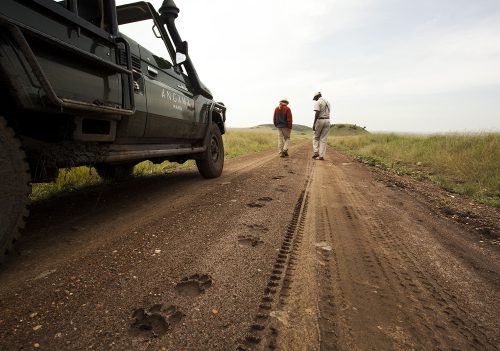
Three years ago, in the midst of a massive storm, we successfully managed to track down a pride of lions as they moved silently through the Inselberg area. Three years down the line, my heart still falls for this landscape.
Filed under: This Week at Angama
Subscribe for Weekly Stories
Comments (2):
19 March 2021
Great and informative post Adam - superlative photography as ever - well done !!
20 March 2021
Thanks Mike - Im glad you enjoyed it. Hard to not love that part of the reserve.
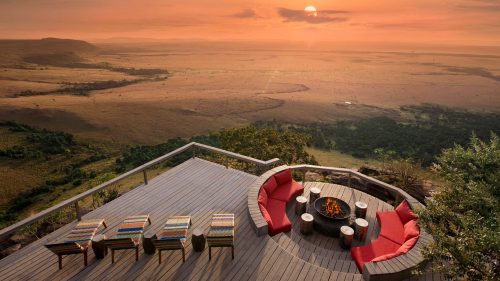
Angama Image Gallery